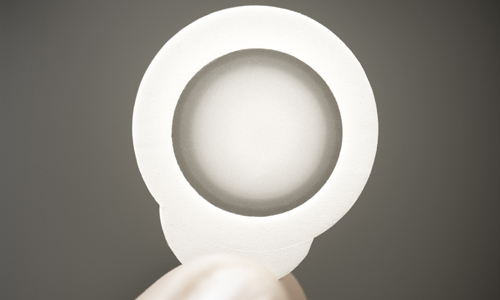People with peanut allergies may have a new treatment option to help reduce the risk of exposure in the coming years, according to the results of a series of clinical trials.
Viaskin® Peanut is a new form of allergy desensitization therapy pioneered by the French pharmaceutical firm DBV Technologies. It comes in the form of a patch worn by patients on the surface of the skin 24 hours a day during a desensitization period (that is, a time during which the immune system is trained to lessen its reaction to peanut) of 3 years. In a series of multicentre clinical studies, conducted in part by a team of researchers at Gordon Sussman Clinical Research Inc. of Toronto, research has demonstrated that about 50 percent of children between the ages of 4 and 11 experienced a ten-fold reduction of their sensitivity to peanut. For example, if their trigger dose for a reaction was 100 milligrams of peanut at the beginning of the study, it had increased to 1000 milligrams by the end.
“If someone is tolerating 1000 milligrams, that’s considered a positive result,” says Dr. Sussman. “One peanut is about 300 milligrams, so 1000 milligrams is more than three peanuts.”
A later extension of the first clinical study, which also included adults but did not have a control group, showed that up to 80 percent of patients benefitted from the therapy.
Although desensitization therapies (that is, treatments designed to reduce sensitivity to allergens) have been around for several years, the Viaskin patch method takes a different path through the immune system, making it considerably safer for patients, Dr. Sussman says.
“You don’t sensitize, you are getting a beneficial desensitization or protective immune response. We don’t actually see peanut allergen in the bloodstream,” he explains. Rather, the peanut protein on the skin patch is absorbed by condensation through intact skin and delivered to Langerhans cells, so-called “messenger cells” within the body’s immune system. This bypasses the adaptive or “learning” part of the immune system, and substantially reduces any chance of the therapy itself triggering an anaphylactic reaction.
Participants in the various clinical studies, including Dr. Sussman’s research, were required to undergo a peanut allergy challenge at the beginning of the trial to assess their specific allergy threshold, and then repeat the challenge at the end of the trial to assess if their threshold had gone up. During the trial, patients had to wear the Viaskin Peanut patch 24 hours a day for a one-year period, and come in for tests to assess the levels of immune-globulin E and G proteins (markers of specific allergic and other immune system reactions) in the bloodstream on a periodic basis.
The patches were tolerated quite well by most participants, Dr. Sussman explained, causing nothing more than minor rashes or eczema around the patch site on some of the patients.
As these trials are still experimental, there is no cost to patients selected to participate. “They take the chance that they may end up on a placebo, Dr. Sussman says. [Editor’s note: A placebo means the patient may be given a treatment that does not contain peanut, neither patients nor practitioners know if the patient is given a placebo.] “And the nice thing about these peanut studies…is that after the study is complete, the sponsor lets them stay on the patch. So, with the initial peanut study it was one year, and then they continued on the active treatment for another two or three years.”
Although DBV Technologies does not yet have any information about when Viaskin Peanut may be licensed for use, according to Dr. Sussman, “there’s keen interest from the public, and it’s already changed peoples’ lives. And people in a study, even if they’re on placebo, a lot of them can travel. A lot of them feel like they can live a lot easier knowing they’re in a study. You may see a psychological benefit – not in all patients – but in the majority of patients, because they’re in a peanut trial and they’re trying to treat their peanut allergy differently than simply just avoiding.”
Thank you Dr. Sussman!
Tags: allergy therapy, Gordon Sussman, peanut patch, Viaskin Peanut patch
